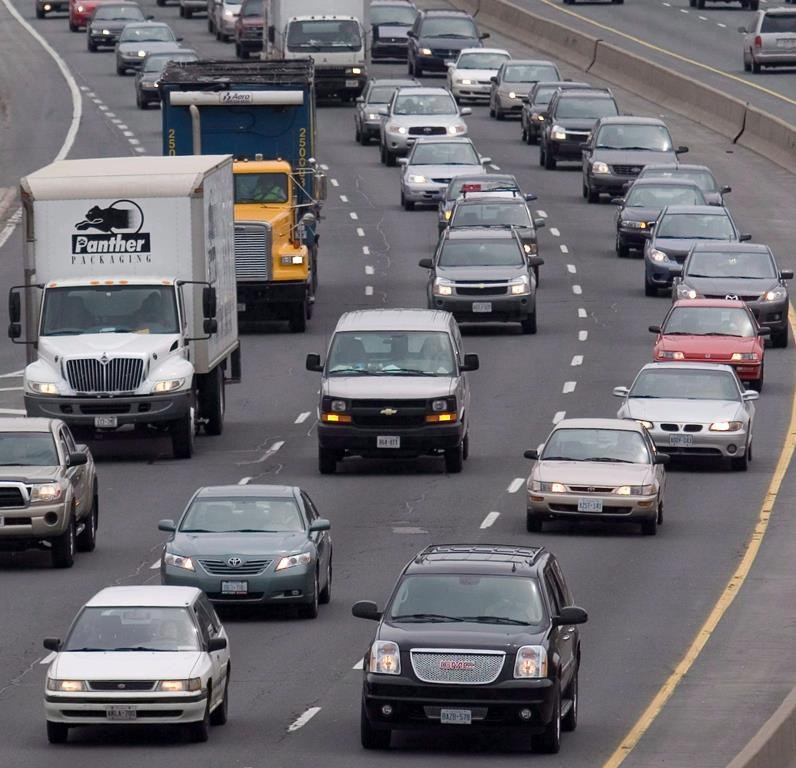Insurance costs for those who live in Ontario fell on average by 3.8 per cent, with some areas seeing a drop of over 26 per cent from 2021, according to a new report.

“Over the past two years, many Ontarians have been driving much less than they used to, due to pandemic-induced lifestyle changes such as remote work,” said Tanisha Kishan of Ratesdotca.
“There has been a corresponding drop in accidents and claims, which means fewer losses to be absorbed. This could contribute to the continued decrease in premiums we are seeing now. But it won’t last forever.”
The City of Brampton, which formerly had the highest auto insurance rates in the province, according to Ratesdotca, has fallen to fourth after rates in that area fell by 26.8 per cent year over year.
Another GTA city, Vaughan, moves atop the rankings despite the fact that rates fell in that city by an average of 6.7 per cent to $2,179.
In spite of the fact that average prices fell in the GTA, the remainder of the top 5 for the list all came from that area as it included Ajax, Richmond Hill and Mississauga.
Other notable cities’ rankings from the list include Toronto (7), Hamilton (17), London (19), Cambridge (23), Guelph (27), Thunder Bay (31), Peterborough (34), Kitchener (35), Sudbury 43 and Ottawa (44).
At the bottom end of the auto insurance pay scale are Cornwall, Elizabethtown, Amherstview, Gananoque, Martintown, Iroquois, Brockville and Kingston, where premiums were estimated to be around $1,132 last year.
So why did people from Vaughan pay $2,179, on average, to insure their cars last year while people from Kingston paid nearly half of that?

Get weekly money news
One expert says that there are as many reasons that premiums are set as there are cities, but collision is the main reason for prices.
“The fundamental cost driver is the cost of accidents within a location,” said Mary Kelly, who is a professor of finance and insurance at Wilfrid Laurier University.
She said there are several lines of auto insurance people are buying, and each comes with its own cost factors.
“One is comprehensive, and that’s basically coverage that protects your car when your car isn’t moving,” Kelly said. “So if you live in a neighbourhood where auto theft is a popular activity, those premiums are going to be higher.”
She also said that if most people in your neighbourhood park their vehicles in garages, then prices will be lower.
“If you have a hailstorm coming through (and) your car is parked outside, it could be a write-off,” the professor explained.
That won’t be the case in a neighbourhood where everyone parks their car in a garage, she continues, because “you won’t have any claims.”
Another coverage that people buy is referred to as third-party liability, which protects others from what you do as you drive down the road.
She said in this case, the size of a household will affect the price of the premiums.
“If you have six people in a car, you’re going to get a lot more injuries than if you have one person in the car,” Kelly explained.
The more the injuries, the higher the cost will be for insurance companies as the money they pay out for injuries to people tends to be a larger part of the bill than damage to property.
This leads to another factor on why premiums tend to be higher in poorer areas than in bigger cities as more affluent people tend to drive newer, bigger cars.
“It may cost more to repair, but the really big costs come with the personal injury component, not the repairs per se,” Kelly explained.
She said that the people in less affluent neighbourhoods are also less likely to have other forms of coverage which would also drive up prices as the auto insurer is the payer of last resort.
Another factor is the distance you and your neighbours commute to the office or plant on a daily basis.
“So if you’re living in Vaughan and everyone is driving to downtown Toronto, their exposure is a lot greater than in Kitchener, where we drive 4 km to work. That’s a long haul for us,” she said.
There are dozens of other factors that go into pricing such as what you drive, speed limits and how close your home is to the highway, but Kelly says auto insurers are not making a killing.
“There are a lot of insurance companies out there, so it’s really not like any of them are earning buckets of money off of auto insurance,” she noted.
“I will say it’s been a little different since 2020 because no one’s been on the road. And that’s why a lot of auto insurers have been giving discounts or rolling back rates.”
But she said as people begin to hit the road again, they will begin to see rates creep back up.










Comments